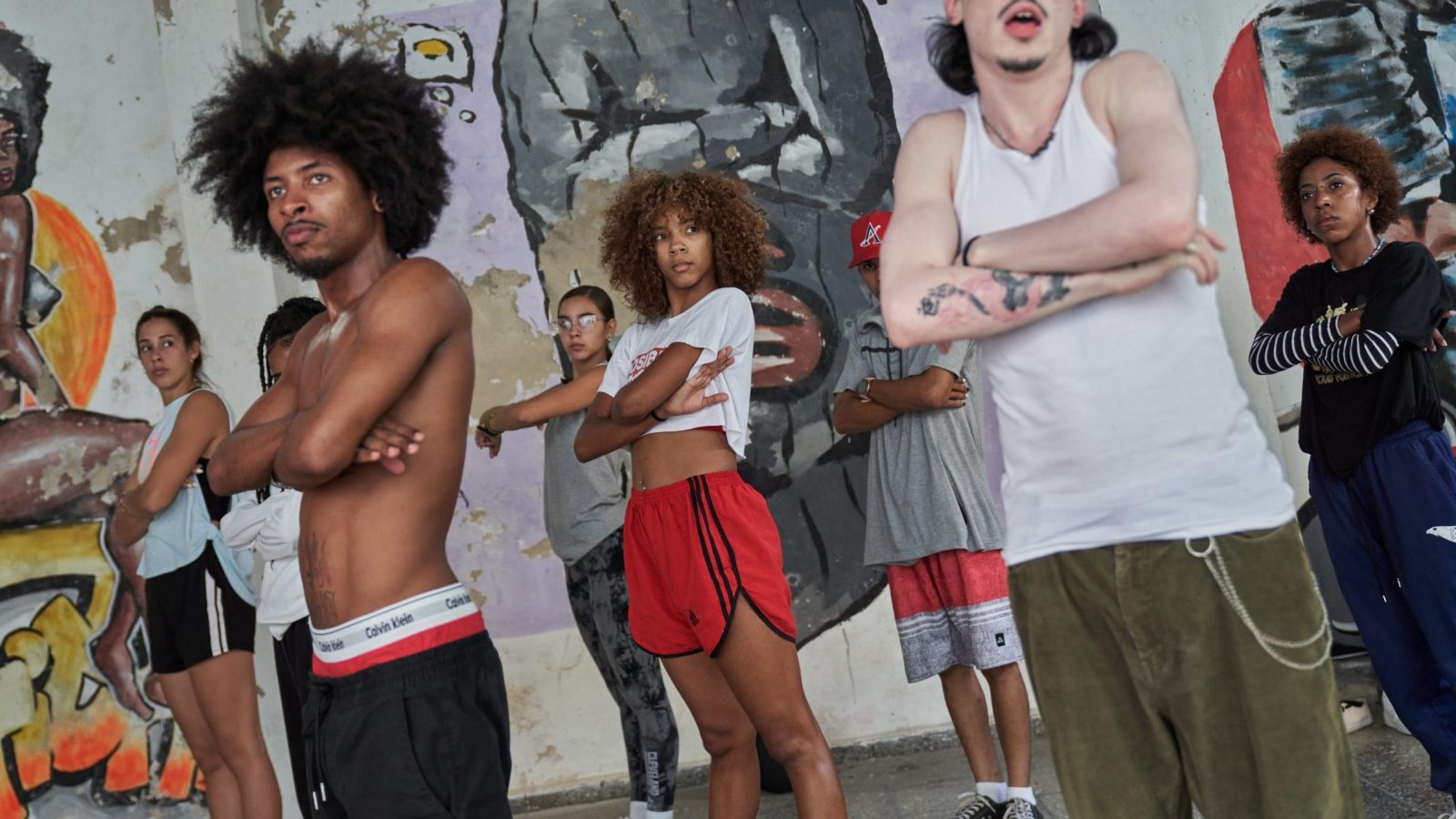In late December, a half-dozen members of the Cuban dance troupe Los Datway twirled and twirled to a reggaeton song in a colonial tenement in central Havana, an iPhone pointed at them as they practiced their choreography. Since Los Datway released a video Paying tribute to Argentina after the South American nation won the 2022 World Cup, the group’s Instagram account has amassed over 40,000 followers and attracted international coverage from outlets such as Mexico The day and Franco-Congolese site News from Africa.
While the attention has resulted in advertising deals with local stores and concert choreography with other artists, Los Datway has struggled to make money directly from digital platforms while in Cuba, home to the world’s slowest internet. Online payment services like PayPal and Stripe are banned in the country as part of the U.S. trade embargoand Instagram and YouTube monetization features are not available to local creators.
Los Datway started in 2016 when Darién López, a backup dancer for the popular Cuban reggaeton duo Yomil y El Dany, recruited two friends to practice moves in the neighborhood. “I had social media accounts but I couldn’t use them because I didn’t have a phone,” said López, who goes by Chaiky. Rest of the world. Instead, she used a friend’s phone to start posting photos and videos of their choreography online.
“Sometimes a whole day goes by and we can’t get our content out.”
Darien “Chaiky” Lopez • Los Datway Dancer
It would take a whole night and a trip to the center of Havana, where there is a better chance of getting a clear signal, to upload a video. Even then, it could happen that “a whole day goes by and the video doesn’t get published,” he added.
After winning a dance challenge by Dominican singer Ozuna and Cuban rapper Ovi in 2021, Los Datway has begun adding members to its crew, which now consists of 18 dancers and four producers. But there is a high turnover. “Some of our dancers are no longer in Cuba,” López said. With With 117,000 followers on Instagram, López has collaborated with local clothing stores to promote their clothes in his videos.
Because online payments from U.S. companies aren’t available in Cuba, Los Datway members can’t pay to promote their Instagram accounts from the island. Instead, they focus on improving the quality of their videos to increase their visibility abroad. “It’s a little harder for us to access the newer phones,” said Christian Anderson Delis Guerra, a 23-year-old dancer from Los Datway. Rest of the world.
Apple products are sold and resold unofficially on the island, but getting, using, and maintaining one can still be a challenge. Basic tools to fix phone screens require an import permit, downloading apps or software updates is complicated because Cuban IP addresses are blocked, and setting up a new Apple ID with two-factor verification requires a non-Cuban phone number.
Monetizing the platforms is also a challenge. In most parts of the world, YouTube pays creators about $0.018 per ad view after reaching 1,000 followers and joining the platform’s partner program, according to Influencer Marketing Centera Copenhagen-based company specializing in social media and influencer marketing research. But those monetization tools are disabled in Cuba.
For Los Datway and other artists on the island to earn money from their content, they need someone living abroad to provide a foreign address to the platform, receive the payment and send it to Cuba. “It’s complicated to actually receive the money,” said Zamir Muñoz Hernández, a Creator with thousands of views on YouTube, he said Rest of the world.
“It’s complicated to actually get the money.”
Zamir Munoz Hernandez • online creator
The challenges for artists on the island go beyond monetization. Dancers in Los Datway must download songs to their phones to avoid interruptions while rehearsing their routines. But buying songs, or any digital product, is a hassle, since digital payment systems like Stripe don’t work in Cuba.
If dancers want to buy a song from Spotify or YouTube, Cubans are not able to pay for it, said Antonio Ramírez Romero, a DJ who goes by the name ToonAi and works with Los Datway Rest of the worldLike many others in the country, Los Datway dancers stream and download music through tools like Telegram links, where they find pirated versions of songs, or Snaptube, a Chinese app that extracts music files from YouTube videos and lets users keep the audio files on their phones.
To avoid copyright restrictions, Los Datway dancers use remixed songs. “We have to do our own remixes or special editions so that Instagram doesn’t remove our songs,” Ramírez Romero said. Rest of the worldHe said that the platform blocks videos that violate geo-restrictions, so ToonAi is meticulous.
A Meta spokesperson did not respond to inquiries. Rest of the world. Instead, they sent a connection to an Instagram page that states the terms of use for the platform’s licensed music library. “Meta is required to honor our agreements with the rights holders of the music available in our licensed music library,” it says. “Licensed music may also not be available in certain countries or regions.”
Los Datway’s fame has been a slow burn. Its members believe that if social media lifted restrictions on people in Cuba, their popularity would explode. “One of our latest videos has over 272,000 views. If Instagram’s features worked well in Cuba, we could easily have 500,000,” López said. Rest of the world.


